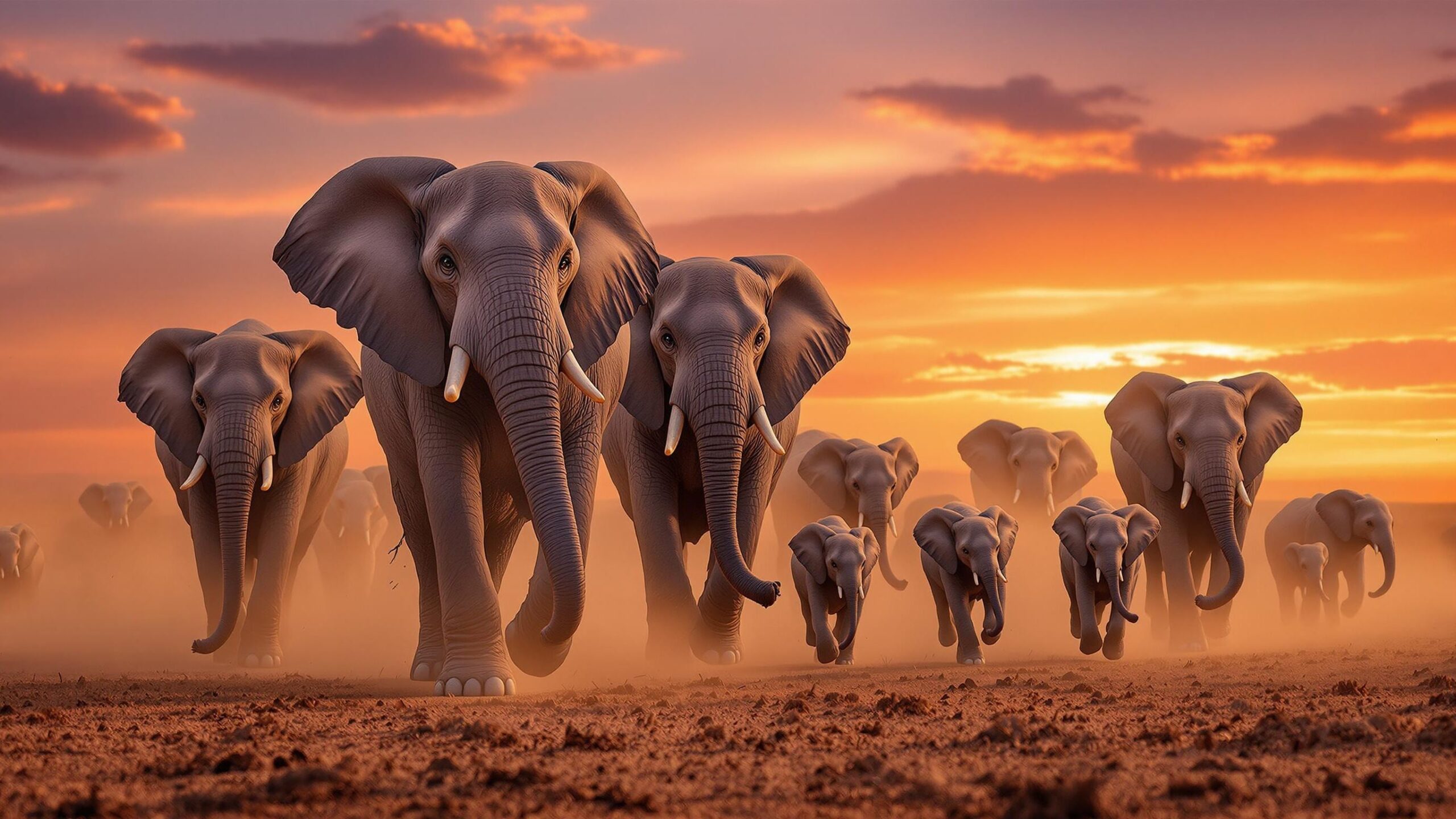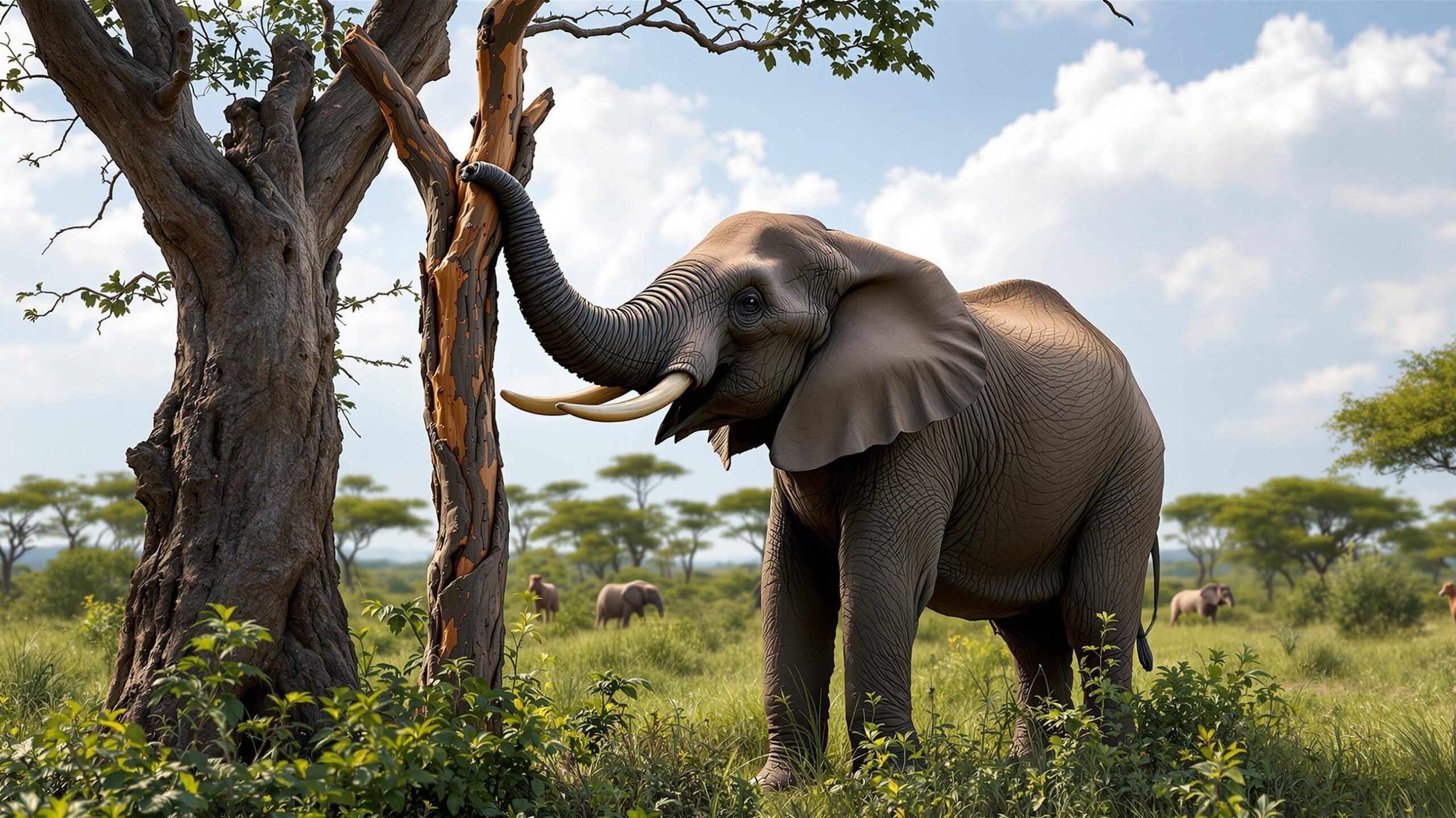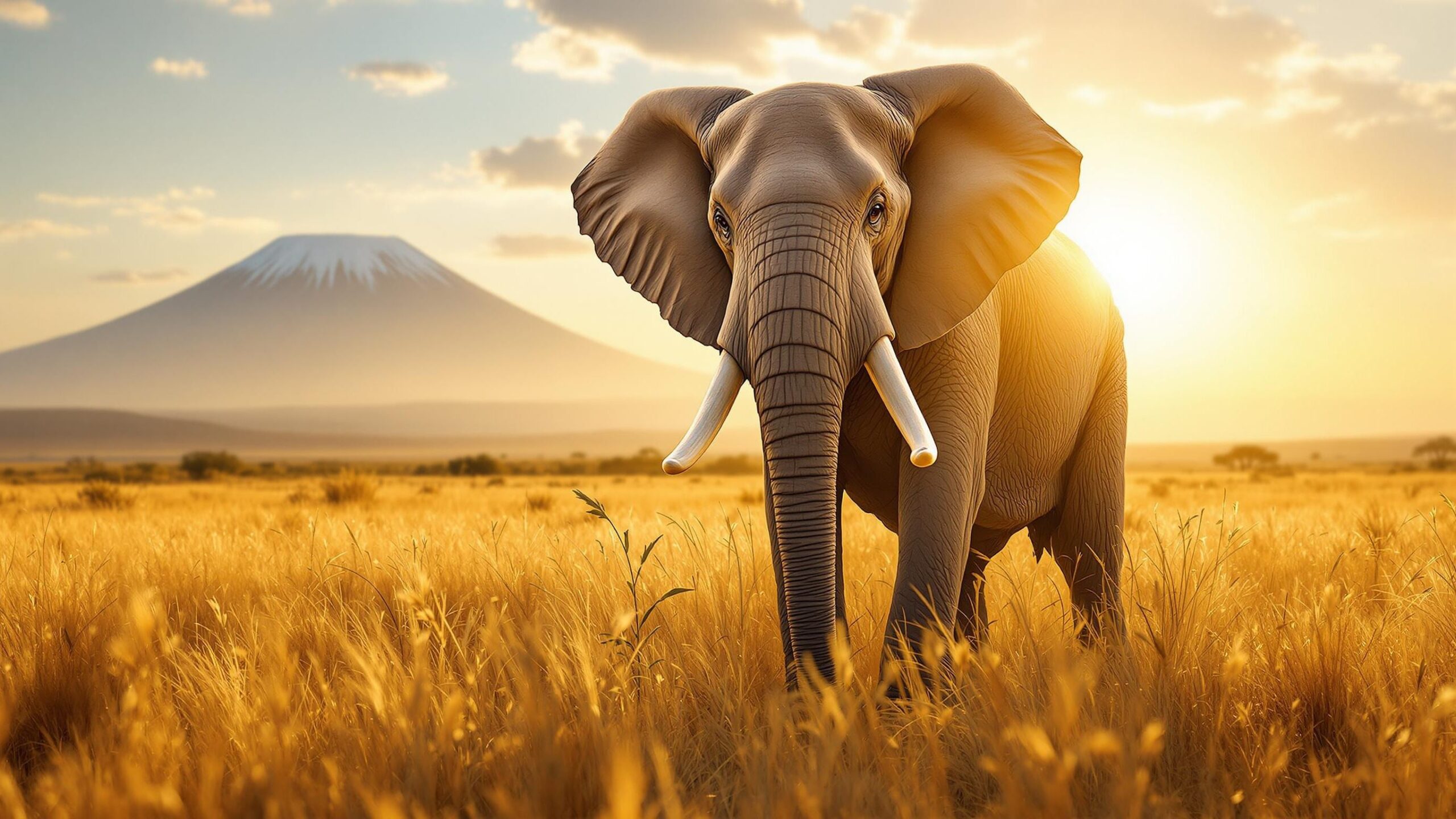Meet Loxodonta africana—The True King of the Savannah
When you think of the largest land animal on Earth, towering majestically over the grasslands, ears flapping like sails, and a trunk swaying with purpose, you’re imagining the African Bush Elephant—Loxodonta africana. Often simply called the “African elephant,” this incredible creature has fascinated scientists, travelers, and storytellers for centuries. From its legendary memory to its pivotal role in African ecosystems, the African Bush Elephant is both a symbol of wild beauty and a keystone species upon which entire landscapes depend. Whether you’re planning a safari, diving into wildlife documentaries, or just curious about these awe-inspiring mammals, let’s embark on a journey through the remarkable world of the African Bush Elephant.
Physical Description: Giants Built for the Wilderness
If you’ve ever seen an African Bush Elephant up close, you know there’s nothing quite like it. Adult males, known as bulls, can reach heights of up to 13 feet at the shoulder and weigh an astonishing 10–13 tons—heavier than two fully grown African buffalo combined! Females, or cows, are somewhat smaller but still dwarf almost every other land mammal. Their massive size is matched by signature features: gigantic fan-shaped ears (larger than those of their forest-dwelling cousins), a long muscular trunk, pillar-like legs, and, in both sexes, curved ivory tusks. These tusks are actually elongated incisors, used for digging, stripping bark, and occasionally for jousting with rivals. The elephant’s wrinkled, tough skin can be up to an inch thick but is surprisingly sensitive, requiring regular mud baths to protect against the sun and biting insects. The most iconic feature is the trunk—a fusion of nose and upper lip, equipped with more than 40,000 muscles and two finger-like projections at the tip for fine motor tasks. An elephant’s trunk is a tool, a drinking straw, a snorkel, and even a communication device, making it one of nature’s most extraordinary appendages.
Habitat and Range: Masters of the African Wild
African Bush Elephants are primarily found in sub-Saharan Africa, thriving in diverse landscapes that include savannahs, woodlands, grasslands, floodplains, and even the fringes of deserts. Their range stretches across more than 30 African countries, from South Africa up to Mali, and from Ethiopia to Botswana. Some of the most celebrated populations roam within national parks and reserves such as Kenya’s Amboseli, Tanzania’s Serengeti, Botswana’s Chobe, and Zimbabwe’s Hwange. Unlike the more elusive African Forest Elephant (Loxodonta cyclotis), which is smaller and prefers dense rainforests, the Bush Elephant is built for the open. This flexibility in habitat has allowed the species to become one of Africa’s most widespread large mammals—though their territories are constantly shifting due to changing water availability and human activity.
Social Structure: Matriarchal Societies and Lifelong Bonds
One of the most fascinating aspects of the African Bush Elephant is its complex, deeply social lifestyle. Elephants live in tight-knit family groups led by a wise, experienced matriarch—the oldest female in the herd. These groups typically consist of related females and their calves, with sizes ranging from a handful to over 50 members depending on the environment. The matriarch’s knowledge is the herd’s survival guide. She remembers the locations of waterholes, safe migration routes, and the lessons of past droughts. Young males, upon reaching adolescence, eventually leave the herd to live solitary lives or form loose bachelor groups.
Elephants are renowned for their emotional intelligence and social rituals. They greet each other with elaborate trunk touches, comfort distressed family members, and even display what appears to be mourning behavior when a herd member dies. Their social bonds can last decades, and studies have shown that elephants recognize and remember dozens of individuals even after many years apart.

Diet and Foraging: Nature’s Tireless Gardeners
A full-grown African Bush Elephant is, in many ways, a living bulldozer. These herbivores consume up to 350 pounds of vegetation every day, which requires almost constant foraging. Their diet includes grasses, leaves, bark, roots, and fruit, depending on the season and availability.
Because of their insatiable appetites and impressive digestive systems, elephants play a critical ecological role as “ecosystem engineers. ” By knocking down trees, stripping bark, and creating trails through dense brush, they shape the landscape in ways that benefit countless other species. Their dung is rich in seeds, which helps replant forests and grasslands wherever they roam. During the dry season, elephants dig deep waterholes in dry riverbeds, providing water for themselves and a host of other animals. In this way, elephants literally create lifelines for Africa’s wildlife.
Communication: The Subtle Language of Elephants
Elephants are famous for their “trumpeting” calls, but their real communication arsenal goes far beyond what the human ear can detect. African Bush Elephants produce low-frequency sounds, called infrasound, that travel miles across the savannah. These rumbles are used to coordinate group movements, signal distress, or announce the arrival of a new calf. Body language is equally important. A raised trunk can signal alertness; flapping ears may indicate excitement or serve as a cooling mechanism; entwined trunks are a gesture of affection or reconciliation. Elephants even use seismic communication, picking up vibrations through the sensitive pads of their feet. This intricate communication network is vital for maintaining group cohesion, avoiding danger, and passing on the wisdom of the matriarchs to new generations.
Reproduction and Lifespan: A Slow Road to Maturity
African Bush Elephants are slow to reproduce—an adaptation to their long lives and complex social systems. Females usually give birth for the first time between 12 and 16 years of age, after a gestation period of about 22 months (the longest of any land mammal). Newborn calves weigh around 250 pounds and are remarkably well developed, able to stand and walk within hours. Calves are the darlings of the herd, cared for not just by their mothers but by “aunties”—other females who help protect and teach the young. This alloparenting is critical for calf survival, as the first few years of life are the most perilous.
Males mature more slowly, reaching their reproductive prime around age 30. They compete for mates through displays of size and strength, sometimes entering periods of heightened testosterone called “musth,” which makes them particularly aggressive and determined suitors. In the wild, African Bush Elephants can live 60–70 years, though only a small fraction reach old age due to threats from poaching and habitat loss.

Adaptations for Survival: Giants in a Changing Land
Living in some of the harshest environments on Earth, African Bush Elephants have developed a suite of unique adaptations. Their massive ears help dissipate heat—acting like biological air conditioners. The trunk, with its thousands of muscles, allows them to access food and water in almost any setting. Their large feet spread their enormous weight over soft ground, preventing them from sinking into mud or sand. Elephants are also among the most intelligent animals, with brains weighing up to 11 pounds. Their cognitive abilities include advanced problem-solving, tool use, and possibly even self-awareness, as evidenced by studies using mirrors and puzzles.
Predators and Threats: Life Is Not Without Danger
For all their size and strength, African Bush Elephants are not without threats. Young calves are sometimes preyed upon by lions or hyenas, especially if they stray from the protection of the herd. However, adult elephants have few natural predators—an enraged matriarch can send even the most determined lioness fleeing. The biggest threats, sadly, come from humans. Illegal poaching for ivory has decimated populations in some regions, while habitat fragmentation from agriculture and settlement disrupts traditional migration routes and access to water. Conflicts between elephants and humans—over crops, water, and land—are an ongoing challenge in many parts of Africa.
Conservation Status: A Cautious Tale of Hope
The African Bush Elephant is currently listed as Endangered by the International Union for Conservation of Nature (IUCN), a status reflecting decades of population decline driven by ivory poaching and habitat loss. In some countries, elephant populations have been reduced by more than 70% in a single generation. Yet there is hope. Coordinated international efforts, tougher anti-poaching laws, and increased funding for wildlife reserves are making a difference in certain regions. Some populations—especially in southern Africa—have stabilized or even rebounded thanks to robust protection and community engagement. Elephants are highly adaptive, and with continued vigilance, there’s every reason to believe these giants can thrive for centuries to come.
The African Elephant’s Role in Culture and Legend
Across the African continent, elephants are much more than just animals; they are cultural icons, spiritual symbols, and subjects of countless legends. In many African societies, the elephant is associated with wisdom, power, and good fortune. Folktales abound with clever elephant matriarchs outwitting predators or helping lost travelers. Even today, elephants are central to the identity and economy of many African nations. They draw tourists from all over the world, support thousands of jobs in wildlife tourism, and inspire artists, musicians, and storytellers.
Fun Facts: Surprising Truths About the African Bush Elephant
Did you know elephants can “hear” with their feet? Their footpads are sensitive to vibrations, allowing them to detect distant thunderstorms or the approach of other herds. Or that elephants mourn their dead, returning to the bones of lost herd members and gently touching them with their trunks—a behavior that has mystified scientists for years. Elephants are also playful, frequently seen splashing in waterholes, wrestling with siblings, or using sticks as makeshift back scratchers. They love dust baths, rolling in fine soil to keep their skin healthy and free of parasites.
The Future of the African Bush Elephant: What Lies Ahead?
The future of the African Bush Elephant will depend on how humans respond to the challenges of the 21st century. As Africa’s human population grows, balancing the needs of people and elephants will require creativity, compromise, and compassion.
Innovative solutions—such as wildlife corridors, community-based conservation, and eco-tourism initiatives—are already yielding results in some regions. Local communities, empowered with resources and education, are often the best stewards of elephant habitats.
For wildlife lovers, the best thing you can do is to support responsible tourism, raise awareness, and advocate for policies that protect these magnificent animals. Every action, however small, contributes to a future where the trumpeting call of Loxodonta africana continues to echo across Africa’s great plains.
The Enduring Majesty of the African Bush Elephant
To witness an African Bush Elephant in its natural habitat is to be reminded of the planet’s wild heart—a creature both ancient and astonishingly alive, powerful yet profoundly gentle. Their presence enriches the land, nurtures entire ecosystems, and inspires awe in all who see them. Whether you view them as gentle giants, ecological engineers, or symbols of wild Africa, one thing is clear: the African Bush Elephant is irreplaceable. Their survival is a testament to nature’s resilience—and to our ability, as humans, to cherish and protect the world’s wonders. The story of Loxodonta africana is still being written, and with our help, its next chapters can be even more extraordinary.

